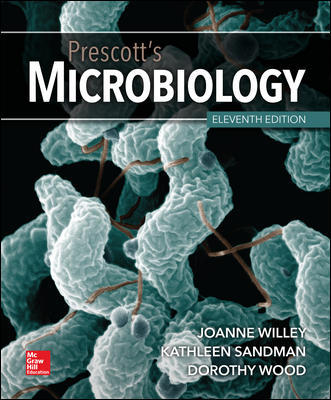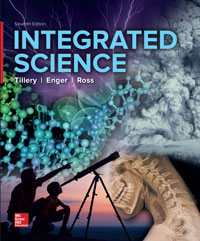Description
Test Bank For Prescott’s Microbiology 11Th Edition By Joanne Willey
Prescott’s Microbiology, 11e (Willey)
Chapter 2 Microscopy
1) The ________ is the point at which a lens focuses parallel beams of light.
Answer: focal point
Topic: Microscopy
Bloom’s/Accessibility: 1. Remember / Keyboard Navigation
ASM Topic: Module 08 Microbiology Laboratory Skills
ASM Objective: 08.01 Properly prepare and view specimens for examination using microscopy (bright field and, if possible, phase contrast).
Learning Outcome: 02.01b Correlate lens strength and focal length
2) The ________ is the distance between the center of a lens and the point at which it focuses parallel beams of light.
Answer: focal length
Topic: Microscopy
Bloom’s/Accessibility: 1. Remember / Keyboard Navigation
ASM Topic: Module 08 Microbiology Laboratory Skills
ASM Objective: 08.01 Properly prepare and view specimens for examination using microscopy (bright field and, if possible, phase contrast).
Learning Outcome: 02.01b Correlate lens strength and focal length
3) Light rays are refracted (bent) when they cross the interface between materials with different refractive indices.
Answer: TRUE
Topic: Microscopy
Bloom’s/Accessibility: 1. Remember / Keyboard Navigation
ASM Topic: Module 08 Microbiology Laboratory Skills
ASM Objective: 08.01 Properly prepare and view specimens for examination using microscopy (bright field and, if possible, phase contrast).
Learning Outcome: 02.01a Relate the refractive indices of glass and air to the path light takes when it passes through a prism or convex lens
4) Confocal microscopes exhibit improved contrast and resolution by ________.
A) illumination of a large area of the specimen
B) blocking out stray light with an aperture located above the objective lens
C) use of light at longer wavelengths
D) use of ultraviolet light to illuminate the specimen
Answer: B
Topic: Microscopy
Bloom’s/Accessibility: 2. Understand / Keyboard Navigation
ASM Topic: Module 08 Microbiology Laboratory Skills
ASM Objective: 08.01 Properly prepare and view specimens for examination using microscopy (bright field and, if possible, phase contrast).
Learning Outcome: 02.02a Evaluate the parts of a light microscope in terms of their contributions to image production and use of the microscope
5) A 30× objective and a 20× ocular produce a total magnification of ________.
A) 230×
B) 320×
C) 50×
D) 600×
Answer: D
Topic: Microscopy
Bloom’s/Accessibility: 3. Apply / Keyboard Navigation
ASM Topic: Module 08 Microbiology Laboratory Skills
ASM Objective: 08.01 Properly prepare and view specimens for examination using microscopy (bright field and, if possible, phase contrast).
Learning Outcome: 02.02a Evaluate the parts of a light microscope in terms of their contributions to image production and use of the microscope
6) A 45× objective and a 10× ocular produce a total magnification of ________.
A) 900×
B) 55×
C) 450×
D) 145×
Answer: C
Topic: Microscopy
Bloom’s/Accessibility: 3. Apply / Keyboard Navigation
ASM Topic: Module 08 Microbiology Laboratory Skills
ASM Objective: 08.01 Properly prepare and view specimens for examination using microscopy (bright field and, if possible, phase contrast).
Learning Outcome: 02.02a Evaluate the parts of a light microscope in terms of their contributions to image production and use of the microscope
7) A microscope that exposes specimens to ultraviolet, violet, or blue light and forms an image with the light emitted at a different wavelength is called a ________ microscope.
A) phase-contrast
B) dark-field
C) scanning electron
D) fluorescence
Answer: D
Topic: Microscopy
Bloom’s/Accessibility: 1. Remember / Keyboard Navigation
ASM Topic: Module 08 Microbiology Laboratory Skills
ASM Objective: 08.01 Properly prepare and view specimens for examination using microscopy (bright field and, if possible, phase contrast).
Learning Outcome: 02.02c Create a table that compares and contrasts the various types of light microscopes in terms of their uses, how images are created, and the quality of images produced
8) Immersion oil can be used to increase the resolution achieved with some microscope lenses because it increases the ________ between the specimen and the objective lens.
A) optical density
B) refractive index
C) optical density and refractive index
D) neither optical density nor refractive index
Answer: B
Topic: Microscopy
Bloom’s/Accessibility: 2. Understand / Keyboard Navigation
ASM Topic: Module 08 Microbiology Laboratory Skills
ASM Objective: 08.01 Properly prepare and view specimens for examination using microscopy (bright field and, if possible, phase contrast).
Learning Outcome: 02.01a Relate the refractive indices of glass and air to the path light takes when it passes through a prism or convex lens
9) A substage condenser is used to focus light onto the specimen, which increases the resolution of a light microscope.
Answer: TRUE
Topic: Microscopy
Bloom’s/Accessibility: 2. Understand / Keyboard Navigation
ASM Topic: Module 08 Microbiology Laboratory Skills
ASM Objective: 08.01 Properly prepare and view specimens for examination using microscopy (bright field and, if possible, phase contrast).
Learning Outcome: 02.02a Evaluate the parts of a light microscope in terms of their contributions to image production and use of the microscope
10) The ________ is the distance between the specimen and the objective lens when the specimen is in focus.
Answer: working distance
Topic: Microscopy
Bloom’s/Accessibility: 1. Remember / Keyboard Navigation
ASM Topic: Module 08 Microbiology Laboratory Skills
ASM Objective: 08.01 Properly prepare and view specimens for examination using microscopy (bright field and, if possible, phase contrast).
Learning Outcome: 02.02a Evaluate the parts of a light microscope in terms of their contributions to image production and use of the microscope
11) The useful magnification of a light microscope is limited by the ________ of the light source being utilized.
Answer: wavelength
Topic: Microscopy
Bloom’s/Accessibility: 2. Understand / Keyboard Navigation
ASM Topic: Module 08 Microbiology Laboratory Skills
ASM Objective: 08.01 Properly prepare and view specimens for examination using microscopy (bright field and, if possible, phase contrast).
Learning Outcome: 02.02b Predict the relative degree of resolution based on light wavelength and numerical aperture of the lens used to examine a specimen
12) The special dyes used in fluorescence microscopy that absorb light at one wavelength and emit light at a different wavelength are called ________.
Answer: fluorochromes
Topic: Microscopy
Bloom’s/Accessibility: 1. Remember / Keyboard Navigation
ASM Topic: Module 08 Microbiology Laboratory Skills
ASM Objective: 08.01 Properly prepare and view specimens for examination using microscopy (bright field and, if possible, phase contrast).
Learning Outcome: 02.02c Create a table that compares and contrasts the various types of light microscopes in terms of their uses, how images are created, and the quality of images produced





Be the first to review “Test Bank Prescott’s Microbiology 11Th Edition By Joanne Willey”